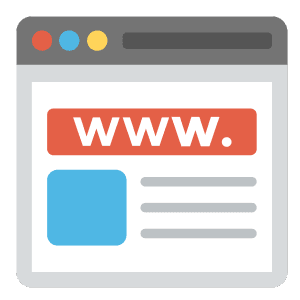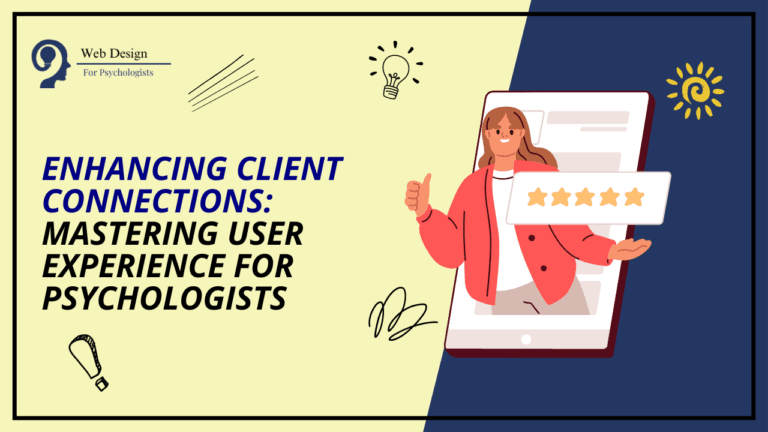In the digital age, where the first interaction between a psychologist and a potential client often occurs online, the importance of user experience (UX) in website design cannot be overstated. For psychologists, a website serves as a virtual introduction, an insight into their practice, and a platform for client engagement. This comprehensive exploration, focusing on UX design for psychologist websites, aims to elucidate the pivotal role of user experience in fostering a welcoming, informative, and accessible online environment.
The Essence of UX in Psychology Websites

User Experience (UX) in web design refers to the overall experience a user has when interacting with a website. It’s about how easily and pleasantly they can obtain the information they’re looking for and perform desired actions. For psychologists, this translates into creating a space that reflects the care, understanding, and professionalism of their practice.
UX Design for Psychologist Websites: More Than Just Aesthetics
UX design for psychologist websites goes beyond the surface level of visual appeal. It encompasses several key elements:
- Intuitive Navigation: Ensuring that visitors can effortlessly find what they are looking for, be it service descriptions, contact details, or appointment booking options.
- Content Structure: Organizing information in a clear, logical manner to help visitors understand your services and approach.
- Interactive Elements: Incorporating features such as online questionnaires, appointment booking systems, and contact forms that enhance user engagement.
Navigation in Psychologist Websites: Guiding the User Journey
Effective navigation is the cornerstone of any successful website, and this holds especially true for psychologist websites. Navigation in psychologist websites should be:
- Simple and Consistent: Avoid overcomplicating menus. A straightforward layout helps users find information quickly.
- Clearly Labeled: Use descriptive menu titles that accurately reflect the content of the pages they link to.
- Accessible: Ensure that the navigation is easy to use on various devices, particularly for users with disabilities.
The goal is to minimize frustration and confusion, allowing visitors to focus on the content that matters to them.
Building User-Friendly Psychologist Websites: A Holistic Approach

User-friendly psychologist websites are those that cater to the needs and expectations of the site’s visitors. This includes:
- Fast Load Times: Ensuring your website loads quickly to reduce bounce rates and improve user satisfaction.
- Mobile Responsiveness: With the increasing use of mobile devices, your website must perform well on smartphones and tablets.
- Engaging yet Comforting Visual Design: Use colors, fonts, and layouts that evoke calmness, trust, and professionalism.
- Easy-to-Read Content: Utilize clear, concise language and avoid jargon to make your content accessible to a wider audience.
- Emotional Connection: Through imagery, video content, and personal bios, create a connection that resonates with the emotional needs of your clients.
Integrating Essential UX Elements: A Case for Psychologist Websites
Let’s delve into some practical applications of UX principles in the context of psychologist websites:
- Homepage: Your homepage should immediately convey who you are and what you offer. Use welcoming images and succinct, reassuring copy that speaks to the visitor’s needs.
- About Page: This is where you can connect on a more personal level. Share your qualifications, experience, and approach to therapy. Authentic photographs and a warm, professional tone can be very effective.
- Services Page: Clearly outline your services. Use layman’s terms to describe different therapies or specializations. Include details on what a typical session might look like to demystify the process for potential clients.
- Contact Page: Make getting in touch as easy as possible. Offer multiple contact methods (form, email, phone) and possibly integrate an FAQ section to address common inquiries.
- Testimonials: Client testimonials (with permission) can greatly enhance trust. They provide social proof and give prospective clients an idea of what to expect.
- Blog: Regularly updated blogs can not only boost SEO but also provide valuable resources for visitors, showcasing your expertise and approachability.
Conclusion: Crafting User Experiences That Heal
In the realm of mental health, where establishing trust and comfort is paramount, the role of UX in website design cannot be understated. A well-crafted website, focused on user experience for psychologists, can effectively bridge the gap between a professional and their potential clients. It’s an opportunity to make a meaningful first impression, build trust, and start a potentially transformative journey for someone seeking help.
In embracing the principles of UX design for psychologist websites, remember that every element, from navigation to content, plays a role in crafting an inviting and supportive digital environment. Your website is more than a business tool; it’s an extension of your practice’s ethos and a beacon for those seeking guidance. By prioritizing user experience, you’re not just building a website; you’re nurturing a virtual space that respects, understands, and welcomes those in need of your services.




